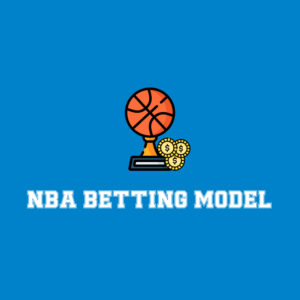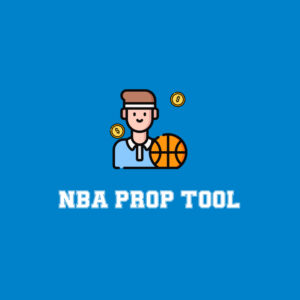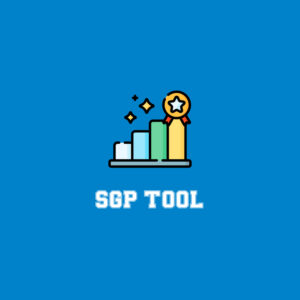
“I hate fantasy drafts.” — Said no one ever.
Best ball is the fastest growing format in fantasy football, because 100% of your time is spent drafting.
If you’re brand new to best ball, you’ll find the next two sections helpful. If you already have experience with best ball on Underdog Fantasy, scroll down to the “Handling Each Position” section.
What is Best Ball?
For those unfamiliar, think redraft fantasy football but remove start/sit decisions, the waiver wire and trades. You draft your team before the season starts, and then during the season, your best players are automatically started in your lineup each week. At season’s end, you tally up each team’s weekly points, and the winner is the one with the most total points.
Underdog Scoring and Positional Requirements
Underdog Fantasy is the slickest/smoothest interface for best ball drafting. No platform gives you a better draft room experience, and it’s also incredibly easy to screenshot your teams post-draft or go back and view prior drafts (and assign memorable nicknames to your favorites).
All Underdog drafts are 20 rounds, and you’ll draft QB/RB/WR/TE. Scoring is half-PPR, and each week during the NFL season the “computer” will choose 8 players from your team as your optimal lineup.
The majority of Underdog drafts are 1QB drafts, where you start 1 QB, 2 RB, 3 WR, 1 TE, 1 flex (RB/WR/TE). New for 2022 are their superflex drafts, where a superflex spot replaces one of the three WR slots. In superflex best ball drafts, you start 1 QB, 2 RB, 2 WR, 1 TE, 1 flex, 1 superflex (QB/RB/WR/TE).
A quick example should help clear any confusion. Say you drafted Jalen Hurts and Jared Goff as your two QBs in 2021. In Week 1, they scored 28.8 and 29.9 fantasy points, respectively. For Week 1, Goff’s 29.9 points would make it into your QB slot. In Week 2, Hurts and Goff scored 21.8 and 19.4 fantasy points, respectively. So, Hurts’ 21.8 fantasy points would make it into your QB slot in Week 2, giving you 51.7 (29.9 + 21.8) total QB points through 2 weeks of the 2021 season.

Handling Each Position
Quarterback
For the best ball leagues where you only start 1 QB each week, I’d aim to draft two high-end starting QBs, or three starting QBs. For 2022, if you drafted Lamar Jackson (QB4 ADP) and Matthew Stafford (QB9), there’s very little marginal benefit of drafting a third QB.
If you aren’t going with two high-end options, drafting three starters like Russell Wilson (QB8), Tua Tagovailoa (QB19) and Mac Jones (QB23) will provide a similar amount of expected fantasy points during the season.
Test case: Justin Herbert and Aaron Rodgers were both top-10 QBs per 2021 Underdog ADP. Having those two would have netted you 429.6 fantasy points during the 17 weeks of the fantasy season. The mediocre due of Kirk Cousins and Carson Wentz would have delivered 347.3 points. If you had added Joe Burrow to the Cousins/Wentz duo (none were top-10 ADP in 2021), your team would have scored 412.1 fantasy points from the QB slot. Strikingly similar to Herbert/Rodgers!
In the superflex best ball leagues, I’d aim for three starting QBs, with at least one a high-end fantasy option. If you cannot get a top-10 QB on your team, I’d consider up to four QBs for your team in that format.
Test case: Herbert and Rodgers would have given you 689.9 fantasy points in 2021. Adding Kirk Cousins to Herbert/Rodgers would increase the total to 788.0. Cousins and Wentz would have only mustered 538.4 points if you went with only two average starters. The trio of Jalen Hurts, Carson Wentz and Matt Ryan would have given you 637.2 fantasy points. Drafting Kirk Cousins in addition to Hurts, Wentz and Ryan would bring that total up to 726.4 points in 2021.
Another note: Underdog is half-PPR best ball, so compared to full-PPR leagues, QBs on Underdog score more fantasy points relative to the other positions. It’s important to have a solid QB room by the end of your draft. Kirk Cousins had 285.4 fantasy points last season. His teammate Justin Jefferson had 308.3 PPR points, but only 256.8 half-PPR points. On a PPR platform, Jefferson had 8% more fantasy points than Cousins, while Cousins had 10% more fantasy points than Jefferson on Underdog. The scoring system makes a difference.
Running Back
All 20-man best ball drafts will have you starting two RBs each week, and you’ll want to draft 4-8 RBs on your roster.
If you’re going really RB-heavy in your draft room, you can get by with as few as four on your team. A four-RB team in 2022 may look like Jonathan Taylor (RB1 by ADP), Saquon Barkley (RB13), Elijah Mitchell (RB24), and Tony Pollard (RB30).
The thought process behind this type of build is you’re able to stockpile additional WRs, and you don’t need too many things to go your way for your RB room to become elite. If Ezekiel Elliott suffers a serious injury early in the 2022 season, then this team has the best RB group in your league, even though you only took four in the draft. Conversely, any major injury to these RBs and you’ll be hard pressed to remain in contention. It’s a high-risk, high-reward strategy.

More common is taking 5-6 RBs, where you take 1-2 early on, 2-3 in the middle rounds, and 1-2 in the later rounds. This type of balanced approach gives yourself more room for injury, while also making it easier to grab studs at the other three position groups.
The other extreme end is the zero-RB strategy, where you stockpile 7-8 RBs, and take them all in the mid-late rounds. When doing this, be mindful of which RBs are likely to score fantasy points early in the season.
Taking seven backup RBs like Chicago’s Khalil Herbert will limit the fantasy points your team can score early in the season, before injuries inevitably happen. Likely committee backs (AJ Dillon and Chase Edmonds), as well as pass-catching specialists (J.D. McKissic and James White), are the archetypes of RBs to mix/match with pure handcuff backs when going zero-RB.
Generally, you should not be drafting RBs on the same team, unless their roles are clearly defined and it’s not a strict handcuff situation. Drafting both Dalvin Cook and Alexander Mattison is a less optimal play than Damien Harris and James White.
You never want to find yourself rooting for injuries on your own team. For Mattison to return value, he needs a major injury to Dalvin Cook to occur. With Harris/White, there’s potential for both to contribute without cannibalizing each other. The occasional “James White game” where he has 8 targets does come at Harris’ expense that week, but unlike Cook/Mattison, we don’t need a Harris injury for White to produce spike weeks. When in doubt, do not draft RBs from the same team onto your roster.
Wide Receiver
In the 1-QB best ball drafts, you’ll have to start three WRs each week. For these drafts, I’d recommend 8-11 WRs on your team.
If you’re only drafting eight, make sure you have a really strong WR core, with a couple players capable of greatly exceeding ADP (like rookie WRs). An example of a suitable eight-WR build could be Ja’Marr Chase (WR2 by ADP), CeeDee Lamb (WR8), Mike Williams (WR16), Courtland Sutton (WR24), Michael Pittman (WR27), Allen Robinson (WR30), Garrett Wilson (WR40) and Jakobi Meyers (WR56).
Most builds will have 9-10 WRs: some combination of 1-2 early studs, 2-3 guys in rounds 4-9, 1-3 guys in rounds 10-14, and 1-3 late round targets. If you find yourself executing a hyper fragile RB strategy (only 4 RBs), then you’ll probably draft 10-11 WRs (occasionally even 12).
When targeting WRs in the later rounds to fill out your roster — unlike with RBs — target WRs on the same team as your earlier picks. While RB is almost entirely a volume-driven position for fantasy scoring, WR is much more volatile week to week, and the main reason your teams should have more WRs than RBs on them. A long TD catch by a team’s second, third or fourth receiving option can be the reason a team’s WR1 underperforms that week. If you already have Jerry Jeudy on your team, target his teammates like Tim Patrick and KJ Hamler toward the middle to end of your draft.
In the superflex drafts, you only need to start two WRs each week, rather than three. For these drafts, I’d recommend 6-9 WRs drafted, with 7-8 WRs the more common number for a balanced build.
Tight End
Draft two TEs if one is elite and the other is a clear starter — ex. Travis Kelce (TE1 by ADP) and Noah Fant (TE21) — or if both TEs are in the low-end TE1 range — ex. Dallas Goedert (TE7) and Dawson Knox (TE9). Otherwise, I’d lean into three-TE builds, like Zach Ertz (TE12), Hunter Henry (TE15) and Austin Hooper (TE26).
The elite-TE builds often produce more overall fantasy points, but the opportunity cost is much greater when using an early-round pick on TE.
For draft strategy, like WR, it’s acceptable to draft two TEs from the same team. Because you only need one TE score each week, TE teammates don’t cannibalize each other in the same way RB teammates can. For 2022, that could be drafting both Hunter Henry and Jonnu Smith or Dawson Knox and O.J. Howard. Since your TE usually will only need a TD to enter your optimal lineup, the Buffalo TEs are a great tandem to target, where you can expect a TD most weeks.
Test case: Travis Kelce and Cole Kmet gave your team 226.3 fantasy points last season. Dallas Goedert and Noah Fant produced 187.8 fantasy points for your best ball roster, a moderate decline in total points, but with significantly lower draft capital used. Waiting and drafting the trio of Mike Gesicki, Hunter Henry and Jared Cook produced 198.8 points for your roster.
General Theory of Stacking
Drafting players on the same team as your QB is stacking. If you draft Justin Herbert in the fourth round of your 2022 fantasy draft, you can stack Mike Williams with him in the next round.
Theory Behind Stacking
Stacking is critical in best ball — where the computer is choosing your optimal lineup each week — because it minimizes how much we need to get “right.” If we draft Herbert in the fourth round of our fantasy draft and follow that pick up with Michael Pittman in Round 5, we need Herbert and the Chargers to have a great season while also needing Michael Pittman to develop chemistry with Matt Ryan and put up a strong year in his own right. In essence, we have placed two bets by drafting Herbert and Pittman: a bet on the Chargers having a good offense and a bet on Ryan’s connection with Pittman. These two bets are completely unrelated to each other. Herbert and the Chargers could have the league’s No. 1 scoring offense, and Pittman could be a total flop at his ADP.
Now, imagine we stacked Williams in Round 5 after taking Herbert the round prior. If Herbert is a worthwhile Round 4 pick as a high-end fantasy quarterback, this practically guarantees the Chargers have a very elite offense. And, if the Chargers have an elite offense, Williams is most likely healthy and catching a lot of touchdowns. By stacking Herbert and Williams, we have minimized the bets we need to get right. If our bet on Herbert is correct, then the probability of our Williams pick also working out skyrockets. By stacking, we have actually placed only one bet: the Chargers will be an elite offense in 2022. If the Colts struggle to pass the ball, it doesn’t affect Herbert-Williams at all.
Math Behind Stacking
For some of the number heads out there, no theoretical explanation will ever be good enough. Fortunately, the math behind stacking exists and is incredibly simple to understand.
Justin Herbert threw 38 TD passes in 2021. If Herbert throws a 50-yard TD pass, he gets 6 fantasy points — 2 points for the yardage since every 25 passing yards is a fantasy point, and then 4 points for the TD pass itself. Mike Williams caught 9 TDs last season, so roughly 24% of Herbert’s TD passes went to him. If Williams catches that 50-yard TD pass, he gets 11.5 fantasy points — 5 points for the yardage, 0.5 points for the reception, and 6 points for the TD catch. In total, that’d be 17.5 fantasy points for our best ball roster if Herbert tosses a 50-yard bomb to Williams.
If we draft both Herbert and Williams onto our best ball roster, and one event happens: a 50-yard TD pass by the Chargers, then we can expect 8.8 fantasy points — 6 points for Herbert plus a 24% chance it’s Williams on the receiving end, so 0.24 * 11.5 = 2.8.
If we draft Herbert and Pittman onto our roster, and one event happens: a 50-yard TD pass by LAC, then we can only expect 6 points — 6 points for Herbert and 0% chance Pittman caught the TD. Stacking helps us need fewer events to go in our favor to deliver fantasy points by correlating our QB with his pass-catchers.
Worth the Risk?
Stacking naysayers generally default to the strategy being risky. This is true.
If we draft Herbert and Williams in the fourth and fifth rounds and the Chargers’ offense struggles, then our best ball roster is almost guaranteed not to perform well. Conversely, if we draft Herbert and Pittman and the Chargers struggle, there’s some chance Pittman can have an outrageous season and make up some of those fantasy points.
However, we aren’t aiming for fourth place in our 12-team league. All the money is in first or second out of 12 teams, which is why we shouldn’t hedge by taking Herbert and Pittman. We should all acknowledge that most of our teams won’t make money. On average, 1 in 6 (16.7%) of our teams drafted should come in first or second of 12 teams. If you can make that 1 in 5 teams (20%), you’ll make money playing best ball.
Aim for first or second 20% of the time, rather than fourth place 100% of the time. Your wallet will thank you in the end.
Common Roster Construction
I find myself drafting “3 QB, 5 RB, 9 WR, 3 TE” builds most often, where the team is fairly balanced at all four positions. If going for a more RB-heavy build, I aim for “3 QB, 4 RB, 11 WR, 3 TE” for my final roster. If you don’t take any RBs in the first 6-8 rounds, target a “2-3 QB, 7 RB, 8 WR, 2-3 TE” build.
Respect Average Draft Position
There will be players you believe are completely mispriced by the market, where you’re willing to draft them three, four, maybe even five rounds earlier than they currently go. However, it’s important to respect ADP; don’t reach more than half a round early in drafts or more than 1-2 rounds later in drafts.
For an idea of this principle in action, check out my recent article on eight of my favorite best ball targets at ADP. In that article, I provide which players I’d recommend drafting my targets over, so you aren’t reaching for players too heavily in your drafts.

Time to Draft
If you’re a new user to Underdog Fantasy, click this link or use promo code FTN for a first-deposit match up to $100. I’d recommend 2-3 slow drafts (8-hour timer) and 2-3 inexpensive ($3 or $5) fast drafts (30 second timer) to get acclimated with player ADP and balancing roster construction with stacking.
Once you’re more comfortable with best ball, Underdog has amazing tournament offerings all spring/summer at a variety of price points ($5 entry fee all the way up to $250 entry fee). The tournaments are your best chance at winning serious money.
My best ball rankings will be up on FTN Fantasy within the week for you to reference when drafting.





























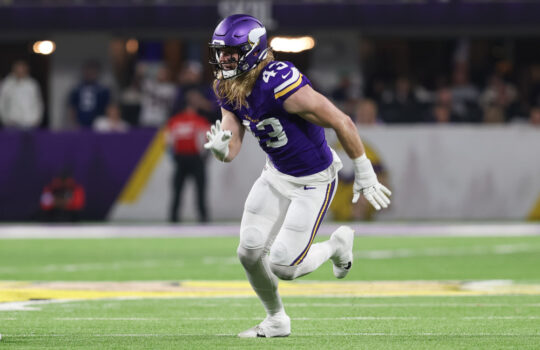



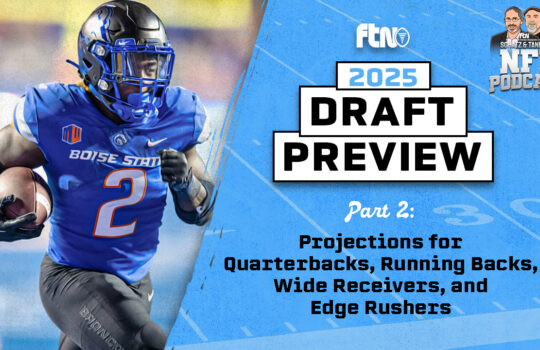

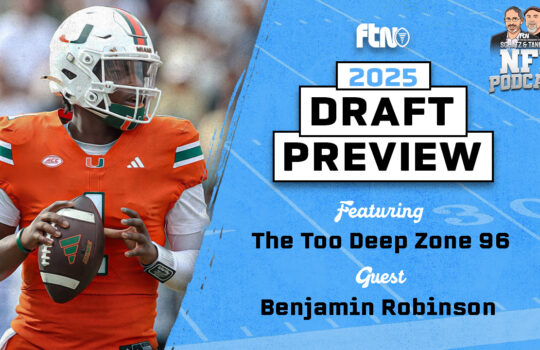





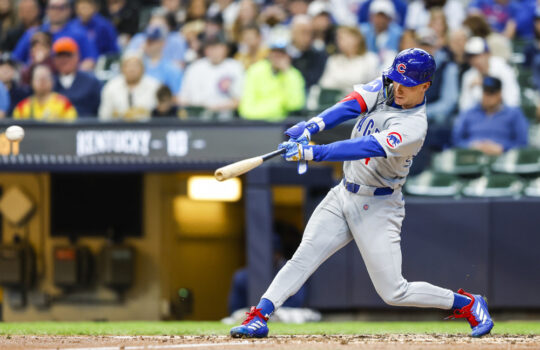

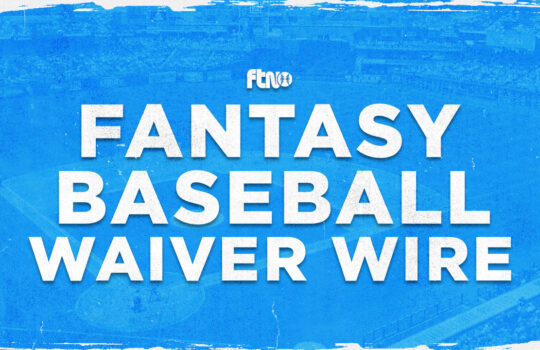

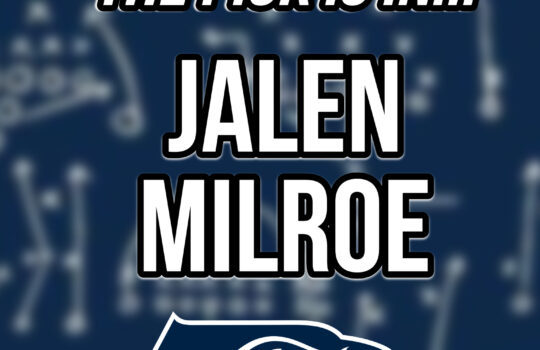

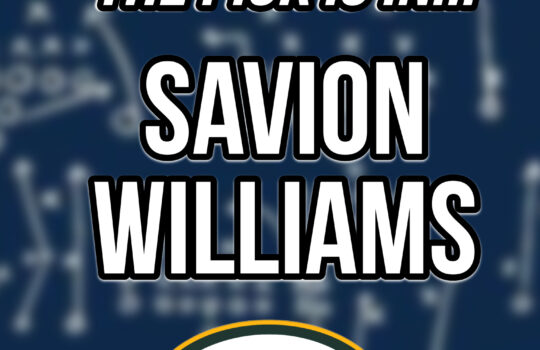
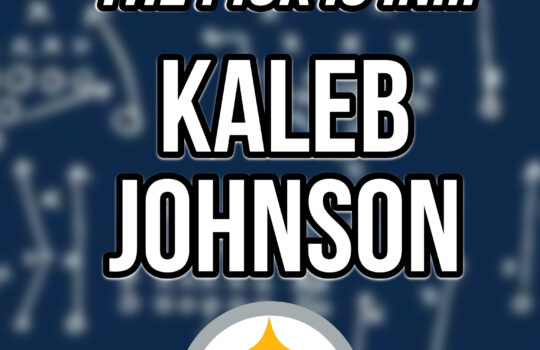

 New York Jets
New York Jets  New England Patriots
New England Patriots  Miami Dolphins
Miami Dolphins  Buffalo Bills
Buffalo Bills  Pittsburgh Steelers
Pittsburgh Steelers  Cleveland Browns
Cleveland Browns  Cincinnati Bengals
Cincinnati Bengals  Baltimore Ravens
Baltimore Ravens  Tennessee Titans
Tennessee Titans  Jacksonville Jaguars
Jacksonville Jaguars  Indianapolis Colts
Indianapolis Colts  Houston Texans
Houston Texans  Las Vegas Raiders
Las Vegas Raiders  Los Angeles Chargers
Los Angeles Chargers  Kansas City Chiefs
Kansas City Chiefs  Denver Broncos
Denver Broncos  Washington Commanders
Washington Commanders  Philadelphia Eagles
Philadelphia Eagles  New York Giants
New York Giants  Dallas Cowboys
Dallas Cowboys  Minnesota Vikings
Minnesota Vikings  Green Bay Packers
Green Bay Packers  Detroit Lions
Detroit Lions  Chicago Bears
Chicago Bears  Tampa Bay Buccaneers
Tampa Bay Buccaneers  New Orleans Saints
New Orleans Saints  Carolina Panthers
Carolina Panthers  Atlanta Falcons
Atlanta Falcons  San Francisco 49ers
San Francisco 49ers  Seattle Seahawks
Seattle Seahawks  Los Angeles Rams
Los Angeles Rams  Arizona Cardinals
Arizona Cardinals 
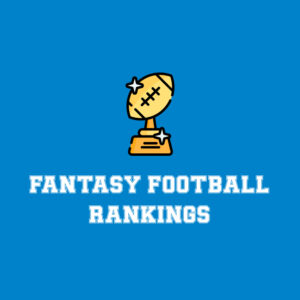
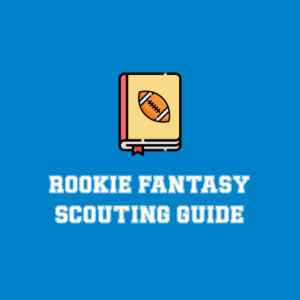
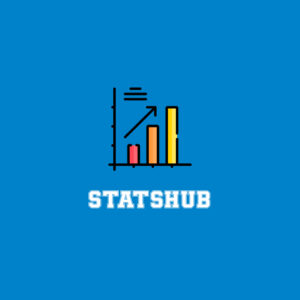





 Boston Celtics
Boston Celtics  Brooklyn Nets
Brooklyn Nets  Philadelphia 76ers
Philadelphia 76ers  New York Knicks
New York Knicks  Toronto Raptors
Toronto Raptors  Chicago Bulls
Chicago Bulls  Detroit Pistons
Detroit Pistons  Milwaukee Bucks
Milwaukee Bucks  Cleveland Cavaliers
Cleveland Cavaliers  Indiana Pacers
Indiana Pacers  Orlando Magic
Orlando Magic  Atlanta Hawks
Atlanta Hawks  Charlotte Hornets
Charlotte Hornets  Miami Heat
Miami Heat  Washington Wizards
Washington Wizards  Denver Nuggets
Denver Nuggets  Minnesota Timberwolves
Minnesota Timberwolves  Oklahoma City Thunder
Oklahoma City Thunder  Portland Trail Blazers
Portland Trail Blazers  Utah Jazz
Utah Jazz  LA Clippers
LA Clippers  Golden State Warriors
Golden State Warriors  Los Angeles Lakers
Los Angeles Lakers  Phoenix Suns
Phoenix Suns  Sacramento Kings
Sacramento Kings  Dallas Mavericks
Dallas Mavericks  Houston Rockets
Houston Rockets  Memphis Grizzlies
Memphis Grizzlies  New Orleans Pelicans
New Orleans Pelicans  San Antonio Spurs
San Antonio Spurs 
